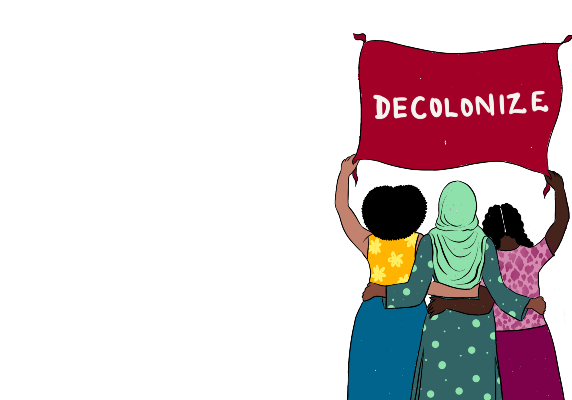Organisational mergers and taking the big next steps
Our earlier blog explored the pros and cons of merging. Once you’ve decided to take the next step, what are the practical considerations that you need to make?
The model merger
There are several different models which can help achieve a merger. The model to be utilised will depend on several factors, such as whether both parties will retain their own “brand” or not – it is important that the legal form of the merger follows on from the desired function and outcome. It should also reflect the key drivers which led the parties to consider the merger in the first instance.
In general, there are three models for merger:
- Organisations coming together to create a new organisation with a fresh identify
- One organisation taking over another organisation (and retaining its own identity)
- A group structure whereby there is a formal arrangement (but both organisations retain their own identify)
Time and resources
Getting the timing right is crucial to a successful merger.
Some charities only open merger discussions when they are already in a difficult financial situation. This increases the risk that merger discussions are rushed and that the wrong decision is reached, or that there isn’t sufficient time to achieve a merger.
There is no one answer as to how long a merger should take. There are several factors which determine how long a merger may take. These include the legal form of the merger and the relevant complexity of the merger partners.
Do not underestimate the time and resources required to achieve a successful merger. Many organisations will also call upon external specialist advisers to support them through the process – for example, legal advisers or accountants. There are different approaches which can be taken to obtaining professional advice – each organisation may have its own advisors, or alternatively it can be possible to have a single working party with joint accounting and legal advisors.
Culture and values
Two organisations may be very well-suited in relation to their charitable work, but if the culture of the organisations is not a good fit, achieving a successful merger is very challenging. It is important that time is spent at the outset understanding the culture of the respective merger parties, including the similarities and differences. This should inform the potential threats and challenges, but also the potential opportunities a merger may bring.
Stakeholders
Effective communication with all key stakeholders from the outset is key. It is important that time is spent early in the process considering each group of stakeholders and their respective needs. The processes and outcomes in a merger process should be clear to all involved.
In certain cases, Charity Commission consent is required. This is usually where a charity’s governing document requires it or doesn’t provide the trustees with the necessary powers to merge. It is also important to consider any other regulators or public bodies who may need to be consulted as part of the merger process.
Alternatives
Depending on the drivers to merge, there may be other forms of collaborative working which would achieve appropriate results. Could the organisations work together to share staff or resources, or could they work on joint projects together? Collaborative working can be an alternative to a merger – or a prelude – and a good way for two organisations to get to know one another without the full commitment of a merger. An alternative structure comes with certain advantages, such as the ability to keep each “brand”, and can help to mitigate risks by keeping potential liabilities separate.
Subscribe to our newsletter
Our weekly email newsletter, Network News, is an indispensable weekly digest of the latest updates on funding, jobs, resources, news and learning opportunities in the international development sector.
Get Network NewsAlternatives are not always the best option so it is still vital to properly assess the risks, and appropriate agreements should be put in place to cover any collaboration. It’s also important to consider the key aims and whether these are met through an alternative.
What does a merger process look like?
A merger process will vary significantly depending on the size and complexity of the merger partners. However, a typical process will involve the following steps:
- Each board will start by considering the feasibility of the merger independently – i.e. the costs, risks and benefits
- A project board or steering group will be formed – including board members and senior management representatives from each organisation
- Due diligence – this may be carried out in-house or by professional advisers – with each board needing to determine the level of due diligence required
- The trustees will take the formal decision to merge in light of the due diligence exercise carried out
- A project team should be appointed to manage the process of merging, feeding back to trustees on a regular basis
Understanding who will lead the process on behalf of each party is important, and it is crucial that there are clear lines of communication throughout the process.
What makes for a successful merger?
There are a number of common factors which can lead to a successful merger:
- Time and resources – each organisation needs to have the necessary time and resources to devote to the process, and a commitment to utilise appropriate external advice where required
- The commitment on all sides to an open dialogue, developing trust between key individuals. This should also include an open and transparent approach to dealing with risks and potential issues on each side
- A shared vision or commitment to what the merger is seeking to achieve
- Shared culture and values
- An appropriate business case which has “buy-in” from all key stakeholders
- Communication with key stakeholders through the process – taking them on the journey through the merger process
What are the common deal-breakers?
There are a number of common deal-breakers which can impact on whether mergers go ahead. They include:
- The lack of a clear business case for merging
- The size and composition of the new board
- The name and brand of the new entity
- Incompatible cultures and values
- Financial liabilities, such as pension scheme deficits
- An unwillingness to compromise at board level
Early dialogue in the process is key to identify any major potential barriers before incurring significant time or professional fees. While there are several potential deal-breakers, they are often surmountable through open and honest dialogue and a willingness to compromise (where it’s appropriate to do so).
What can go wrong?
Some of the common pitfalls include:
- Lack of proper due diligence, meaning there are unexpected issues such as legal issues or unforeseen financial liabilities
- Incompatible objects in the governing documents creating challenges in bringing the two organisations together
- The risk that things have been left too late, meaning there is a focus on survival not success (or leading to a rushed decision where key issues are not fully addressed)
- Key decisions (such a pay rises) being taken in the run up to a merger without proper consultation, leading to disagreements between the merger partners
- Not taking all of the relevant stakeholders on the journey – e.g. in a branch-based organisation leading entirely from the centre and not having sufficient consultation with branches
None of these pitfalls should be insurmountable, but they can create significant issues if not properly managed. They should be addressed with open and honest dialogue throughout the process and a proper risk assessment at the outset. Some of these points also emphasise the importance of good quality professional advice.
Professional advice
I’ve referenced the need to seek professional advice multiple times above, but areas where professional advice is needed include:
- Legal advice, in both the legal form of the merger itself and on any potential legal issues or difficulties in each merger partner
- Accountancy advice which may include financial due diligence or tax advice
- HR advice to understand the potential ramifications of restructuring
- Pension advice if there is a defined benefit pension scheme in place
Getting the right advice at the right time is important – for example, initial advice may focus on the feasibility of the merger (e.g. on the computability of the governing documents) which is then followed up at a later date by a more comprehensive due diligence exercise having established the feasibility of merger.
Bond, haysmacintyre and Russell Cooke will be exploring the challenges of mergers in a webinar on 9 February at 15.30.
Category
News & Views



